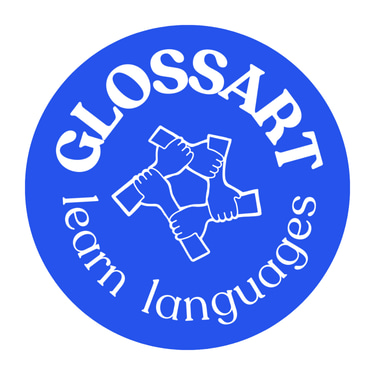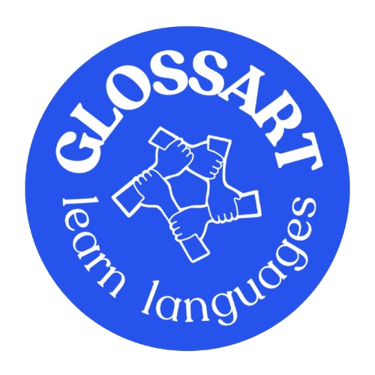Transform Your World with Language Learning at GlossArt Languages!
How Humanity Began Teaching Languages: The Origins of Language Learning
Discover the origins of language teaching from prehistoric gestures and ancient scribes to sacred traditions and modern digital classrooms. At Glossart Languages, we honor humanity’s oldest tradition: the art of communication.
Evangelia Perifanou
10/7/20253 min read


The First Teachers: How Humanity Began Teaching Languages
Humanity has always carried a profound question: How do we pass on what we know? Before books, before writing, before even the idea of a “lesson,” people were already teaching. And at the center of that teaching was language , the invisible thread that binds human beings together.
Before Words: The Language of Survival
Long before structured speech, our ancestors used gestures, cries, rhythm, and repetition. A raised hand warned of danger. A shared chant brought unity to the group. In those prehistoric moments, teaching language was inseparable from teaching survival. Mothers, fathers, and elders weren’t only showing how to light a fire or find water—they were transmitting the sounds that carried meaning. These were the first language lessons.
The Moment of Encounter
Human history changed the day one tribe met another. On riverbanks, trade routes, and battlefields, people faced the need to speak to the “other.” The invention of multilingual exchange was not born out of curiosity alone, but necessity: to trade grain for salt, to negotiate peace, to avoid war, to build alliances. Out of this need, the first interpreters emerged humans who carried the gift of two worlds within them.
This was the beginning of conscious language teaching. A merchant taught his son the words of a neighboring tribe. A sailor carried phrases across the sea. Language became not only survival but opportunity.
Civilizations and the Birth of Formal Learning
With the birth of writing, language moved into classrooms, temples, and palaces.
In Mesopotamia, scribal schools trained students to master cuneiform, and to read the words of other cultures.
In Egypt, hieroglyphs were taught not only as symbols but as sacred knowledge, bridging the human and divine.
In Greece, language teaching was elevated to rhetoric and philosophy: words were no longer just tools but instruments of thought, persuasion, and beauty.
In Rome, Latin became the empire’s great export. Teaching the language of Rome was teaching citizenship, order, and belonging.
For the first time, language education was deeply connected with identity and power.
Teaching: Humanity’s Oldest Profession
At its essence, teaching is one of the most human acts. From the earliest storytellers who preserved myths around fires to the philosophers of Athens, from monks in medieval scriptoria to today’s online teachers , the role has always been the same: to guide another person into understanding. Language teachers, in particular, have always stood at the threshold between worlds. They are not just transmitters of words but of culture, perspective, and possibility. To teach a language is to give someone a new way of seeing reality, to open a window into a different soul.
Sacred Languages and Guardians of Knowledge
As centuries passed, certain languages became vehicles of wisdom and faith. Latin in Europe, Arabic across the Islamic world, Sanskrit in India, and Classical Chinese in Asia were not only means of communication but gateways to philosophy, religion, and science.
To learn these languages was to access entire civilizations of thought. Teachers were not simply instructors , they were guardians of tradition. They carried the weight of transmitting humanity’s deepest questions about the universe, morality, and the soul.
Renaissance Curiosity and the Modern Age
The Renaissance shifted the way languages were taught. Suddenly, people wanted to learn languages not only for trade or faith, but for beauty, curiosity, and literature. French became the language of diplomacy, while explorers and missionaries spread languages across oceans. Dictionaries and grammar books appeared, standardizing what for millennia had been oral and fluid.
By the Enlightenment, language teaching was connected to reason, education, and progress. To learn a foreign tongue was to expand the mind.
Today: A Digital Return to Human Connection
Now, in the 21st century, we can learn a new language with an app on our phone, talk with an AI tutor, or join a virtual class across continents. Technology is powerful but at the heart of it, the essence hasn’t changed.
We still teach and learn languages for the same reasons our ancestors did: to connect, to understand, to bridge the gap between “us” and “them.” Whether it’s a parent teaching a child their first word, or a teacher guiding a student online, every lesson belongs to the same human story.
💡 At Glossart Languages, we see ourselves as part of this long continuum. Teaching languages today is not just about grammar or vocabulary , it’s about honoring humanity’s oldest tradition: the art of communication. A tradition that began with gestures around a fire, that grew with empires and sacred texts, and that continues today, screen to screen, voice to voice, heart to heart.
#GlossartLanguages #LanguageLearningJourney #StoryOfHumanity #LanguageIsArt #LanguageAndCulture #LearnLanguages #SpeakConnectGrow #HistoryOfLanguages #HumanConnection #LanguageTeaching


